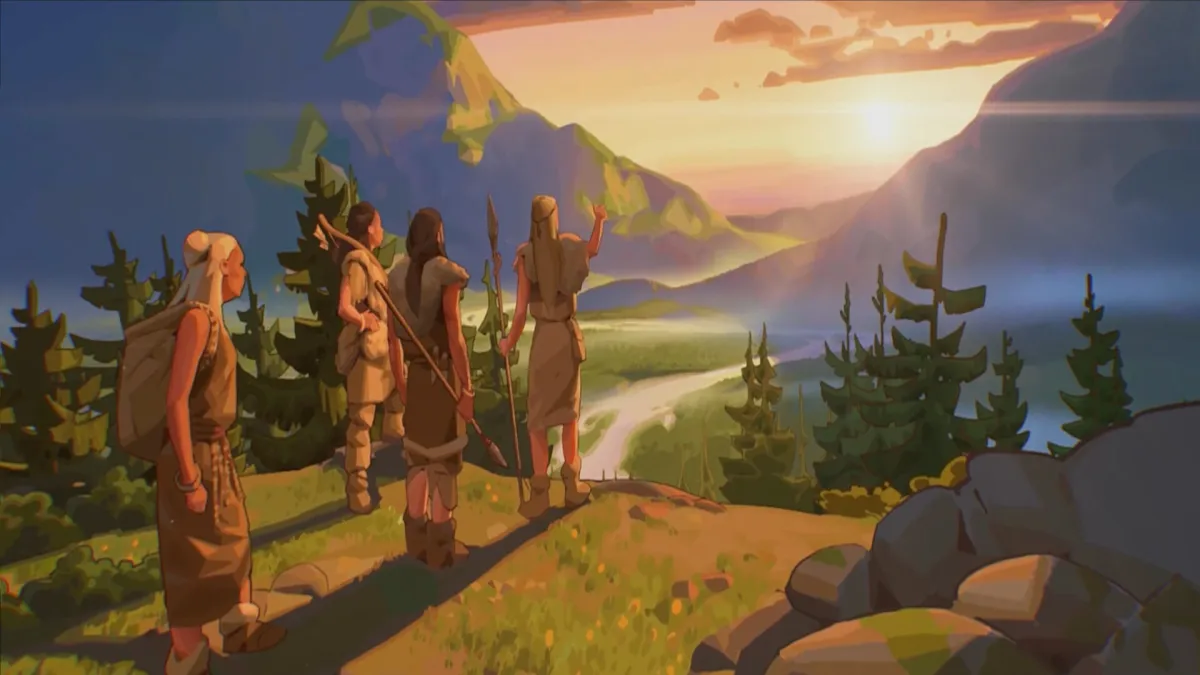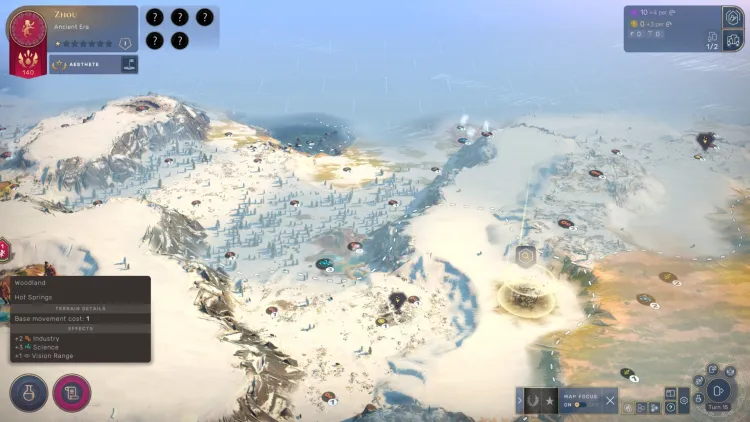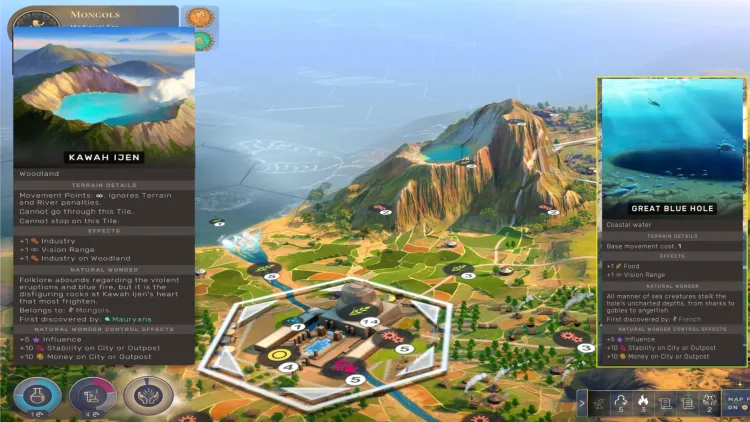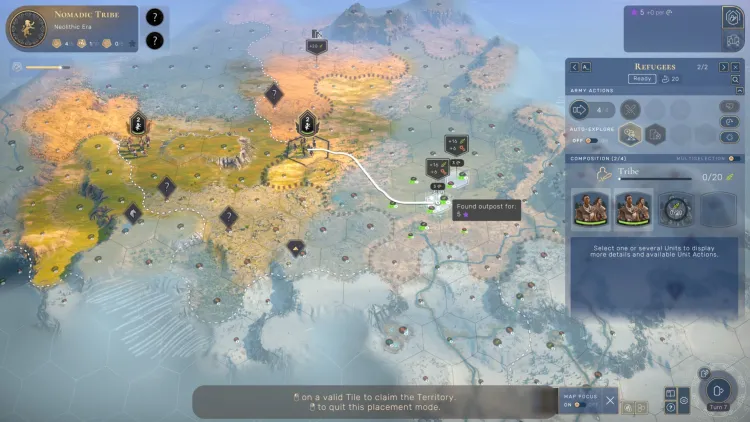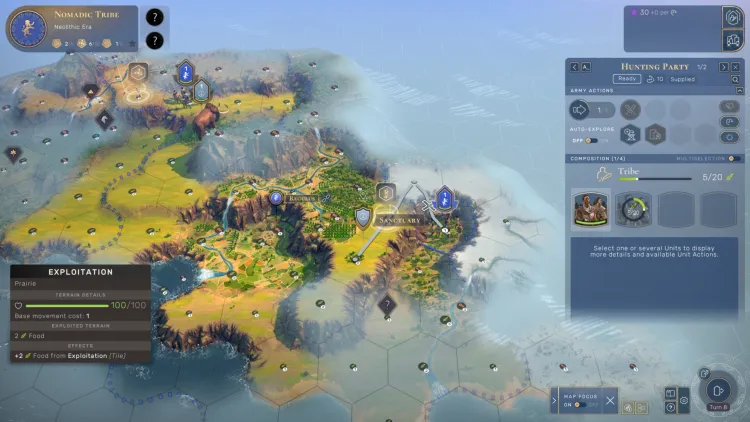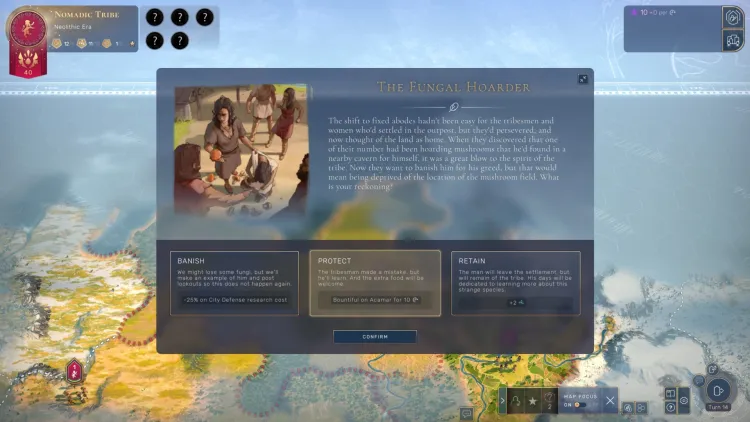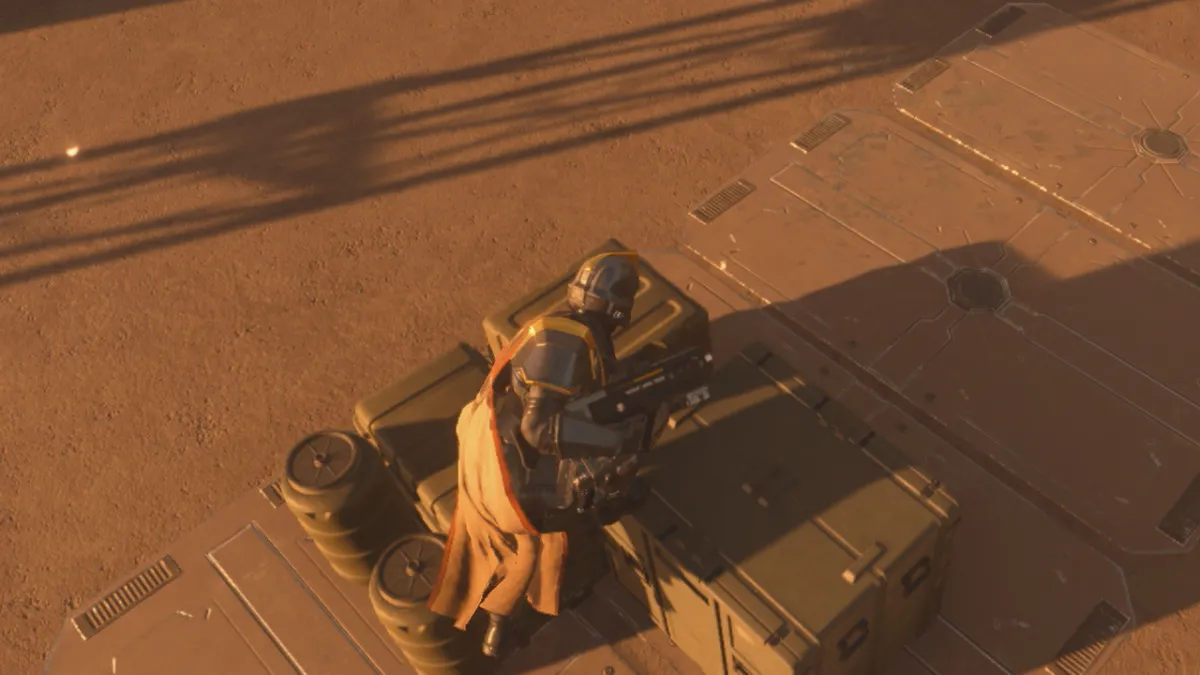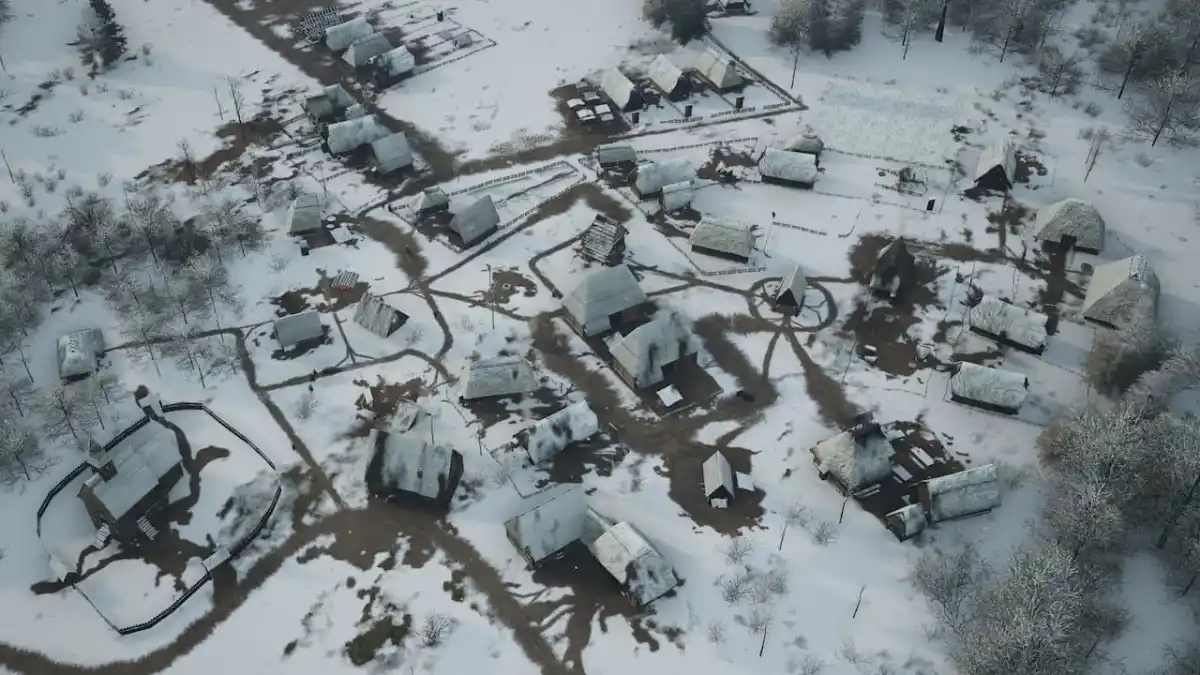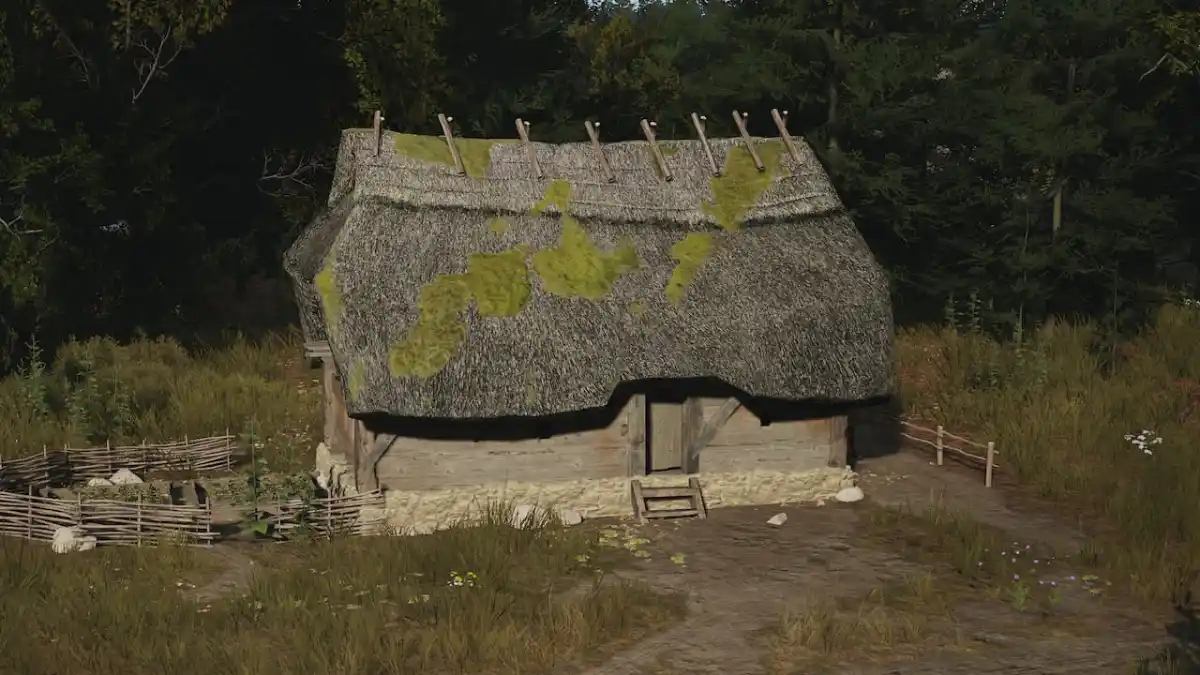Advancing further
Now that you’ve got a grasp of the basics, let’s talk about how we’d advance further from the Neolithic Era in Humankind.
FIMS resources
Like other 4X strategy games, Humankind uses a hex-based grid that outlines spots/tiles on the map. Each tile has a particular yield based on the FIMS system (food, industry/production/hammers, money/gold, and science).
- Food – Helps the city’s growth, creating additional population. Most of the units in Humankind use population for recruitment. There are even projects that can be completed by using up a city’s population.
- Industry – Production speeds up construction and recruitment.
- Money – This helps when using the buyout option for construction and unit options, as well as trades.
- Science – This helps speed up your tech research.
Note: The yields can be seen if you press the close bracket key (“]”) and hexes are outlined if you press the apostrophe key. There are also two small buttons on the lower-right corner of the HUD allowing you to toggle these. If you don’t want too much clutter, or you’d like to marvel at the visuals, you can press Shift + F10 to disable the user interface. It’s like a 4X version of photo mode.
Resource nodes/deposits
As for resource nodes (i.e., luxury and strategic resources), you’ll find these scattered throughout the world and they can be exploited by using extractors (unlocked via techs). Unlike other games, though, the resource nodes in Humankind only provide a single copy of a particular resource. Even with extractors, you won’t gain additional pieces of these each turn.
That flat value is part of a requirement for certain units or projects (i.e., iron, gunpowder, oil, uranium, aluminum, and others). You can either gain control of those nodes or trade with empires/free peoples who are exploiting them.
Terrain yields
Here are the yields you’ll see depending on the terrain features that have extractors or districts that are working them:
- Food – Dry Grass (+1), Coastal Water (+1), and Prairie (+2).
- Industry – Stone Field (+1), Woodland (+1), Rocky Field (+2), Forest (+2), and Mountain (+3).
Note 1: Rivers are boosters in that they add +1 food on top of the existing tile; River Springs also add +1 food. Meanwhile, Geysers add +2 science and +1 industry, and Hot Springs add +3 science and +1 industry on top of the base terrain feature.
Note 2: Luxury resource deposits provide gold and strategic resource deposits give science.
Note 3: If you find a Natural Wonder nearby, you should definitely claim that territory. It will add its yields (i.e., influence, money, or science) to your totals.
Influence, your first outpost, and territories
While you’re exploring in Humankind’s Neolithic Era, you’ll likely notice that you’ve got some influence and that you can build an outpost to claim a territory. These territories have their own borders, and controlling them gives you access to the resources and nodes therein.
Here are some additional tidbits:
- Influence is generated by your empire via curiosities, districts, events, and projects among other things. This resource is used to erect outposts, grow them into cities, attach outposts to cities, unlock new civics, claim Cultural Wonders, and promote societal pressure in neighboring territories.
- Outposts are severely limited in that you can only build extractors. They can, eventually, be upgraded into cities that will provide more options (i.e., districts, unit recruitment, and projects). Alternatively, you can attach adjacent outposts to cities to create a contiguous domain with a shared border. The population and production from that particular outpost will be merged with the parent city.
- The first outpost that you construct only costs 5 influence. However, additional outposts and cities will increase the influence costs. The cost of attaching outposts to cities will also increase, and you’ll spend more if you attach those that are further away from a parent city.
Humankind emphasizes gradual development over time. It’s not like Civilization where you can distinguish between an ideal start and a terrible location from the get-go. Instead, you truly have to explore for dozens of turns to see if the playthrough is going your way.
All in all, min-maxing can be very difficult. Your first outpost, ideally, should be on tile yields with double-digit growth in food and production (i.e., 20/11). You’ll want to look for tiles that are near rivers or forests, and the game will also notify you if there’s an ideal spot. Likewise, you’d want certain resource nodes within the territory. Adjacent territories where you build additional outposts should also follow the same rule. Otherwise, you could end up with a poor city with even worse domains nearby.
Unfortunately, sometimes the locations aren’t as bountiful (i.e., 10/8) or you’re surrounded by tundra tiles. You might have no choice but to cut your losses. Just remember that any outpost you plop down will require a few turns (based on the tile’s industry/production value) before construction can be finished.
Moreover, having multiple outposts early in the game can be beneficial. This will prevent rivals from gobbling up territories since you’ve already claimed them. They might decide to pillage/ransack your outpost, but you could catch them in the act and take them out quickly.
Note 1: It’s possible to spend influence to move your outpost to a new location within the same territory. This can help you pick a more ideal spot.
Note 2: You can learn more about influence in our guides related to civics/ideologies and Cultural Wonders.
Note 3: As mentioned earlier, Humankind‘s units use population. If you disband units in outposts (or cities later), they’ll be added back to the population.
Special events
Finally, let’s talk about special events that can be triggered from time to time in your Humankind campaign. From the Neolithic Era, you’ll encounter ones that provide several options. Examples include gaining additional food, retaining some extra science, or temporarily adding additional movement points to your units. Later, once you have your cities and you’re expanding your territories, you’ll see events related to civics, cultural osmosis, religion, and more.
All right, let’s go to the next part of our Humankind beginner’s guide series to talk about the Ancient Era cultures, cities, districts, and other concepts.
Humankind is available via Steam, the Epic Games Store, Stadia, and Xbox Game Pass for PC. For more information, check out our guides and features hub.

